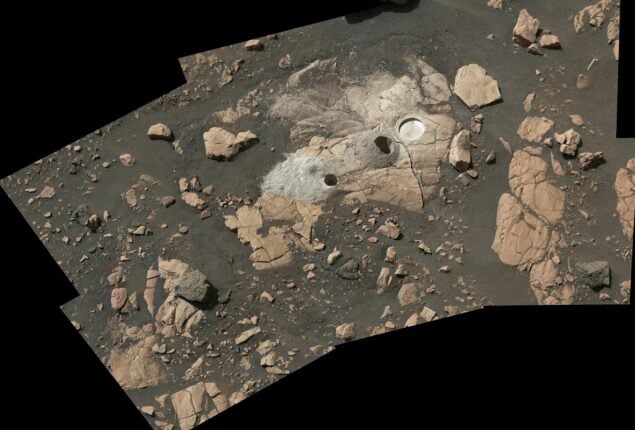Owner of Patagonia Yvon Chouinard donates company to save the planet
Patagonia owner is donating the business to a trust. He is known...

The Perseverance rover discovers biological materials on Mars as a treasure
According to NASA scientists, the Perseverance rover has gathered some of the most crucial samples thus far on its mission to ascertain whether life has ever existed on Mars while exploring the location of an old river delta.
Organic material has been found in a few of the most recent samples, proving that Jezero Crater, which most likely formerly housed a lake and the delta that flowed into it, may have once supported possibly livable habitats 3.5 billion years ago.
According to Ken Farley, a Perseverance project scientist from the California Institute of Technology in Pasadena, “the rocks that we have been analysing on the delta have the highest concentration of organic materials that we have yet identified on the mission.”
The rover has been operating on the red planet for 18 months, and part of its purpose is to search for evidence of past microbial life. Rock samples that may have maintained these distinctive biosignatures are being collected with perseverance. There are now 12 rock samples on the rover.
The material will eventually be returned to Earth in the 2030s via a series of missions known as Mars Sample Return.
examining the delta
Jezero Crater, which is 28 miles across, is extremely interesting to NASA scientists because to the location of the delta. Sedimentary rock, which formed as particles fused together in this formerly water-filled environment, retains layers of Martian history in the fan-shaped geological structure, which was originally present where a river and a lake converged.
When the rover explored the crater floor, it discovered signs of igneous or volcanic rock. Perseverance has discovered rich sedimentary rock layers during its second campaign to examine the delta over the past five months, adding to the story of Mars’ ancient temperature and ecosystem.
The volcanic rocks that were found on the crater floor, which were created from the crystallization of magma, contrast nicely with the delta’s various sedimentary strata, according to Farley.
We have a thorough grasp of the geologic history after the crater’s formation because to this juxtaposition, which also offers a wide range of samples. For instance, we discovered a sandstone that contains rock fragments and grains that were formed far from Jezero Crater.
One of the rocks that Perseverance sampled was given the moniker Wildcat Ridge by the mission team.
The rock was probably created billions of years ago when mud and sand settled in a saltwater lake as it drained. SHERLOC, short for Scanning Habitable Environments with Raman & Luminescence for Organics & Chemicals, is a device that the rover used to investigate the rock’s surface.
Because organic molecules on Mars reflect the elements that make up life, such as carbon, hydrogen, and oxygen, as well as nitrogen, phosphorus, and sulphur, they are of interest. Some organic molecules can be produced through chemical processes, therefore not all organic molecules need life to make them.
Catch all the World News, Breaking News Event and Latest News Updates on The BOL News
Download The BOL News App to get the Daily News Update & Follow us on Google News.